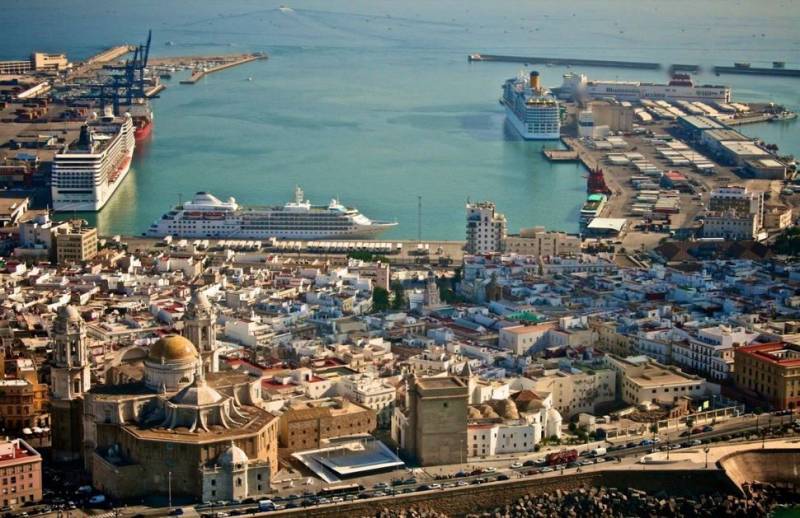Spanish News Today Editors Roundup Weekly Bulletin Jan 17
TOP STORIES: "IT'S NOT REAL—The truth about Spain's 100% property tax for foreigners" & "Sub-zero cold snap puts Spain on alert for freezing temperatures"
Okay, no messing about this week. You’ve probably already seen something about all the kerfuffle that’s been made over the supposed 100% tax that they say they want to levy on homes bought in Spain by non-EU residents, but there’s a lot of misinformation flying about and little of it is useful.
So let’s get straight into this mess that has been splashed all over the Spanish and international press and see if we can clear it up a bit:
The truth about Spain’s property tax for foreigners
The news on everyone’s lips this week is the shock proposal by President of the Spanish Government Pedro Sánchez to impose a
100% tax on real estate purchases made by non-EU residents – essentially, all individuals living in Spain for fewer than 183 days a year which, of course, includes British citizens.
In theory, this proposal (and it is just that: a proposal, and an informal one at that) forms part of Spain’s broader political strategy to combat the current housing shortage and rising costs by limiting foreign investors.
Ironically enough, these types of buyers are really in the minority in Spain. According to the most recent data available, which is for 2023, of the 587,000 properties sold, only around 27,000 went to non-EU citizens – a paltry 5% of the total which President Sánchez believes is driving the housing collapse.
In a sweeping statement, he claimed that all of these properties were snapped up by investors, not to live in, but to speculate on and make money from.
British buyers, despite Brexit and the 90-day rule limiting their time in Spain, remain the largest non-EU group, comprising 8.37% of foreign property demand in 2023. Germans, Moroccans and Romanians also feature prominently among international buyers.
Now, it’s important to remember that this is only a proposal and the president faces serious hurdles to get it over the finishing line, not least of which is the assertion that such a policy may be deemed to discriminatory to be introduced, and could actually be unconstitutional since the constitución española outlaws taxation which places an unfairly heavy burden citizens.
One of those being the issue of taxing non-EU buyers. While Sánchez wants to penalise foreign investors to curb property speculation, Feijóo believes they should be encouraged. In complete contrast, he actually wants to reduce tax for buyers outside of the EU as a way of making Spain more attractive for foreign investment. He says this will stimulate the housing market which will in turn boost the economy and create more opportunities.

His plan also involves a proposal to reduce taxes for home buyers and renters, which includes aid for first-time homebuyers and a reduction in the Property Transfer Tax to 4% for those under 40.
Another sticking point is the ongoing problem of squatting, an issue that is worsening year after year. Right now, there is an anti-squatting law stuck in Congress which would allow rapid evictions of illegal tenants in less than 24 hours, and Feijóo is pushing for this to be enacted immediately.
On the contrary, President Sánchez is being slammed for not even making reference to squatting in his rather extensive housing plan. The opposition leader also wants to offer more support to victims of squatting; he’s proposing a help service and a telephone line for complaints, as well as the creation of a register of squatted houses and permanent connection with local police.
Other measures proposed by the government to tackle the housing crisis include increasing social housing supply, as well as
tightening restrictions on short-term rental apartments. Sánchez also suggested giving incentives for renovating and renting out available properties at fair prices.
At the moment, Sánchez and Feijóo are still battling it out and the hope is that some more moderate consensus can be reached between the two. While the President’s declarations might eventually be suggested as a draft bill to go through the legislative process and the Senate, inevitably becoming watered down along the way, Feijóo’s proposals could be more likely to come into effect as they could be implemented at the autonomic level in the communities where the PP hold power, including Andalucía, the Valencian Community and the Region of Murcia.
All the same, the truth of the situation is that both these proclamations full of lofty words are in reality mere political posturing. You can bet your mortgage that the only reason these two have come out with these radical statements within just a few hours of each other is to try to score points in some House of Cards-style one-upmanship.
The takeaway: NO, you are not about to be taxed an arm and two legs for buying a house in Spain, either now or in the foreseeable future, and YES, Brits, Americans, Australians, Chinese and Arabic investors can still buy a house here and either become a resident or not, as per their wish and ability to fulfil the requirements.
Cool it
We’ve talked a lot in recent weeks about what a mild autumn we had and what an abnormally temperate winter it has been so far, but this week has come along to remind us that it actually does get cold in Spain. It’s probably safe to say that everyone has dug out the winter woollies this week as winter has finally arrived in Spain.
The season so far has had its ups and down – lots of bright, sunny days interspersed with thundery episodes – but Mother Nature has got her act together in the last few days and temperatures have plummeted.
Incredibly, the thermometers dipped as low as -14ºC in parts of the extreme north, and a heavy dusting of snow was visible in mountainous areas.
The cold has sparked action from local authorities, with Murcia’s Ministry of Health activating risk level 1 for low temperatures and advising the public to stay warm, avoid drinking alcohol and prioritise support for vulnerable groups. Murcia city has taken this advice to heart and has intensified its imaginatively named ‘Operación Frío’ programme,
providing hot food, blankets and shelter to homeless people, with 113 such actions already having been carried out since mid-December. If you thought this cold snap was bad imagine the people who have to sleep rough during it! Go on, Murcia city.
Once we got past this episode, a new DANA started creeping towards Spain on Thursday, and this is going to cause
a few days of rather unpleasant weather along the entire Mediterranean coast of Spain and the Balearic Islands. The outlook in these areas is for storms, heavy rain and strong gusts of winds over the weekend.
In fact, most of the country can expect unstable weather this weekend.
But why is our weather so topsy-turvy lately? It’s partly down to a climate phenomenon known as La Niña, which is characterised by the cooling of sea surface temperatures. While it originates in the Pacific, its ripple effects extend globally and in Spain, it can result in increased rainfall in some regions and drier and warmer winters in the south.
On the other hand, this weather pattern is known to contribute to colder-than-average temperatures in central and northern Spain during winter, along with an uptick in Atlantic storms and the increased risk of flooding they bring.
La Niña actually
formed back in December and its effects have been playing out right before our eyes. We’ve had days when the sun has been splitting the stones in southern Andalucía while dark storm clouds gather in northern Galicia. We’ve had days when it’s been bucketing down rain on the Atlantic coast of Spain while those in the Mediterranean are soaking up the rays on the beach.
Since the scientists expect La Niña to hang around for a few more months, it’s definitely going to impact the weather in Spain during 2025. Remember, its alter ego, El Niño, helped to make 2024 the warmest year on record. Since the two are opposites, La Niña may do its part by cooling global temperatures slightly, which would come as a welcome relief. But even if this happens, 2025 is still likely to be among the three warmest years on record, according to the experts.
What’s interesting to note is that Spain has experienced some fierce weather conditions even when La Niña and El Niño weren’t in force, such as the devastating DANA flooding in October. Now, with the La Niña phenomenon in full swing, we will have to wait and see what it has in store for Spain, but one thing is certain: 2025 will be a year of climatic contrasts and extremes.
Murcia
Let’s begin our Murcia section this week, as we have so often before, with the fertile breeding ground of news that is Corvera Airport. On the bright side, you’ll be pleased to know
last month was Murcia Airport’s best December ever, with over 34,000 passengers (that’s an 18.5% bump compared to the same month in 2023) and they closed 2024 on a high with nearly 908,000 passengers for the year.
Domestic routes are still thriving and international travel remains a stronghold. But – and it’s a big but (no sniggering in the back!) –
nearly a third of all flights were recorded as taking off late or being cancelled. In fact, Corvera has just ranked as one of Spain’s worst airports for punctuality, third only to Palma de Mallorca and Ibiza. Not exactly the kind of rankings table Murcia really wants to be heading up, but remember that it does frequently come first in the category of cleanest airports with under 1 million passengers per year, so every cloud and all that…
Still, if you’re not in a hurry and you don’t mind risking a bit of a delayed take-off, you can actually snag a great deal this January:
30 euros for a round trip from Murcia to Marrakech, courtesy of Ryanair. It’s a route that began in April 2024 (see photo below) and it’s officially the cheapest flight to be had out of Murcia this month, proving that it’s still possible to go away and grab some winter warmth (much-needed right now!), even on a shoestring January budget.
Average ticket costs are down 33% – probably one of the only things that’s going down in price, of late – and with the promise of more competition and even better service, trains are quickly becoming the go-to option for budget-conscious and eco-friendly travellers alike.
Aldi’s relentless growth, which includes 40 new stores to be opened nationwide for this year alone, is backed by a new distribution centre in Burgos, up in the north of Spain, ensuring they’ll have the logistical firepower to keep shelves stocked. With over 7,500 employees and 468 locations already under its belt, Aldi is fast becoming a staple in Spanish households, proving that good old-fashioned affordability never goes out of style.
The criminals forced their victim to withdraw over 9,000 euros from a series of ATMs on their way down to Murcia, and when they got to his home at the resort held him captive inside and raided his belonging for all he was worth. Thankfully, their getaway was a bungled affair which ended with the Guardia Civil intervening. They have since arrested eight suspects in connection with the extended robbery, and they are now awaiting trial.
As for what’s on around Murcia this weekend, there’s a treat for all you animal lovers and pet owners out there. Today, Friday January 17, is the Catholic feast of San Antón, the patron saint of animals. It is a fiesta that is observed in many towns around Spain – including
Mazarrón,
Lorca,
Fuente Álamo,
Santa Rosalía,
Yecla and others – by having the local parish priest bless any pets who are taken to the square outside the church at the allotted time (mainly on Sunday 19, instead of today). One of those truly curious, see-it-to-believe-it type of fiestas that could only happen in Spain. The pet blessing is also normally followed by some nice food shared among all participants, which is another bonus.
To see some more events and activities coming up in the Region of Murcia in the more immediate future see our EVENTS DIARY:
Spain
Many of us who have settled down in Spain from abroad still keep some financial interests in our home country, so it’s often necessary to transfer money from one place to another. And while this is totally fine, remember that the Spanish taxman keeps a close eye on everything and there are some
rules to follow.
Essentially, in order to crack down on tax fraud and money laundering, banks are obliged to inform the Tax Office if you try to transfer amounts over certain thresholds. As a bank customer, you’ll sometimes need to inform the taxman yourself too, and it important to know what’s what to avoid hefty fines.
Transfers over 6,000 euros require banks to notify the Tax Agency and transfers above 10,000 euros mean you’ll need to prove the source of the funds. For cash deposits, you’ll need to visit a bank branch with ID for amounts over 1,000 euros, and any transaction involving 3,000 euros or more, especially with 500-euro notes, is automatically flagged to the Tax Agency.
Moving large sums of cash has stricter limits: 100,000 euros within Spain or 10,000 euros out of the country without prior declaration via the S1 form.
Penalties for breaking the rules vary based on severity. Small violations might incur fines up to 50% of the amount involved, while larger or concealed transfers can result in penalties up to 100%. The most serious offenses, like undeclared cash transfers exceeding limits, can lead to fines of 150% of the total amount.
In short, while managing your finances in Spain is straightforward if you follow the rules, staying informed can save you a lot of trouble – and money!
The coming year is shaping up to be a thrilling one for astronomy enthusiasts, with a line-up of celestial wonders to keep eyes glued to the skies. One highlight will be March’s total solar eclipse but before that, January and February will offer two breathtaking planetary alignments that are not to be missed.
Four will be easily visible to the naked eye from Spain, but catching sight of Uranus and Neptune will require a telescope or binoculars. Venus and Saturn will be particularly close, with their proximity at its most stunning between January 17 and 18. Meanwhile, January 16 was the prime time to observe Mars as it reached peak opposition with the Sun, making it shine brilliantly.
Looking ahead, February 28 brings an even rarer spectacle: an alignment of all seven visible planets – Saturn, Mercury, Neptune, Venus, Uranus, Jupiter and Mars. This extraordinary event won’t happen again until 2492, making it a once-in-a-lifetime treat.
To make the most of these celestial shows, head to a location with minimal light pollution, such as rural areas or designated stargazing spots. The best time for viewing is just after sunset when the sky darkens enough to reveal the aligned planets.
To driving now and, like dual carriageways and tunnels, in most places, roundabouts are just another bland feature of our landscape, a necessary and functional addition to the roads to keep traffic flowing smoothly. Not in Spain.
Here, the traffic authorities have turned the humble roundabout into an art form, transforming these everyday traffic regulators into quirky, creative and sometimes downright bizarre attractions.
With more than 15,000 roundabouts dotted across the country, they range from stunning feats of engineering to whimsical nods to local culture and history.
From Europe’s largest roundabout in Badajoz, which stretches an impressive 1.3 kilometres, to a tech-savvy LED-lit marvel in Vigo, there’s no shortage of variety.
You’ll find everything from a potato-themed roundabout in Amorebieta to a functional swimming pool repurposed from an old water tank in León.
In Murcia, art meets eco-consciousness with a split car brimming with flowers, while Benicàssim boasts a massive paella sculpture celebrating Spain’s culinary heritage.
Each roundabout tells its own story, blending creativity with local flavour, proving that even the most utilitarian spaces can become cultural landmarks.
Thus, we can say goodbye to cheap flights out of Jerez and Valladolid airports entirely, and expect fewer Ryanair planes in places like Vigo (-61%) and Santiago (-28%).
CEO Eddie Wilson lamented the lack of “viable” incentives at a press conference this week, pointing out that Spain’s regional airports apparently aren’t as “competitive” as others in Europe. So, naturally, Ryanair will now redirect its planes to destinations like Hungary and Morocco, where growth is “properly encouraged”.
Despite record-breaking passenger numbers in 2024, Aena’s high fees have clearly ruffled Ryanair’s feathers, leaving Spain’s summer travellers to either pay more or head elsewhere. Whether this decision to axe flights to such a popular destination with holidaymakers will blow up in old Eddie’s face remains to be seen.
Alicante
Orihuela is taking a big step towards more sustainable waste management in 2025. The city council has just approved a
new ‘pay-per-use’ system for rubbish collection which will be rolled out in the coming months throughout Orihuela Costa.
This means that instead of paying a flat fee, residents will be charged based on the amount of trash they produce. The idea is to encourage people to recycle more and generate less waste, which is great for the environment.
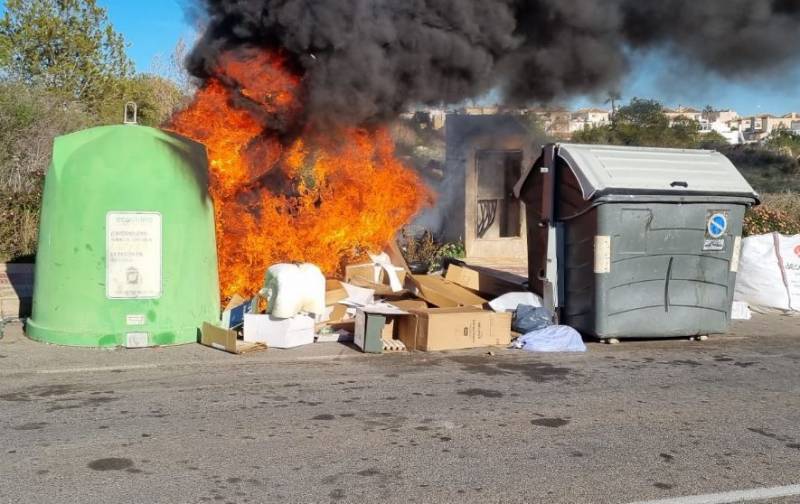
The council is also planning to improve its recycling facilities and provide educational resources to help residents understand how to use the new system effectively. By making recycling easier and more accessible, they hope to see a significant reduction in the amount of waste sent to landfills.
Mayor Emilio Bernal is enthusiastic about the change, stating that the city is fully committed to making this transition a success. He believes that the new system will not only help the environment but also save money in the long run.
While the details have yet to be finalised, the council is also considering additional measures, such as offering discounts for households that consistently produce less waste and providing more recycling bins in public areas. These efforts are part of a broader push to make Orihuela a greener and more eco-friendly municipality.
The largest earthquake in this series had a magnitude of 3.2 and was felt in several towns, including Gandia and Xàtiva. Despite the frequency of these tremors, the majority were below a magnitude of 2.0, which is typically too small to be felt by most people.
Seismologists from the Institute of Earth Sciences in Valencia have been monitoring the situation closely. They reassure the public that these earthquakes are not unusual for the Valencian Community and are part of the natural tectonic activity. However, they are keeping a watchful eye to ensure there are no signs of larger, more significant events.
While the recent activity might be a bit unsettling, experts emphasise that it’s a normal part of the Earth’s processes. Still, it’s a good reminder to be prepared and stay informed. If you live in the Valencian Community, keep an ear out for updates and know what to do to stay safe.
It all started when the hotel called the police, reporting that a 49-year-old woman had been attacked by her 44-year-old partner. When the police arrived, they found the victim, covered in blood, at the reception desk. She explained that her girlfriend had attacked her, thrown punches and tried to push her off the terrace.
The victim managed to escape to the reception, where the police found her. She told them that her girlfriend had also thrown a chair, her passport and her mobile phone out of the window. The police then went to the room where the attacker was, but she wouldn't open the door.
The police then entered through the adjoining room’s terrace and saw the attacker sitting outside. When they asked her to open the door, she didn’t respond. Instead, she stood up, moved to the balcony railing and started to climb over.
One of the policemen kicked open the door and found the woman hanging from the balcony railing, six floors up. It took three officers to hold her arms while she was hanging, but they couldn’t pull her up. Finally, three more officers entered from the room below and grabbed her feet, pulling her back to safety.
The woman, who had attempted suicide, was arrested for domestic abuse and taken to the Comarcal Hospital of the Marina Baixa for a psychiatric assessment.
Andalucía
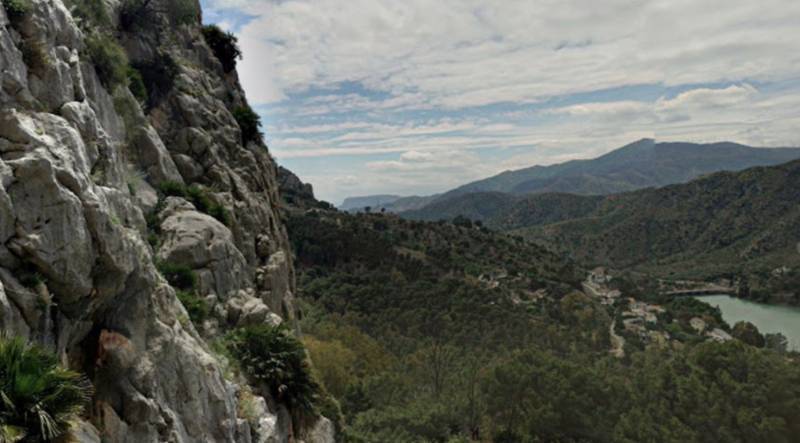
Emergency services received the distress call late last Friday evening, but by the time rescuers arrived, it was too late to save her. Accompanied by a fellow climber who escaped unharmed but traumatised, her death marks the second fatality in the area in less than two months, following a similar accident involving a 20-year-old British hiker.
These tragic accidents serve as a stark reminder of the inherent dangers that come with exploring the dramatic cliffs and steep terrain of El Chorro, a destination that has long drawn climbers and hikers from across the globe. While its towering rock faces and panoramic views are undeniably breathtaking, the unforgiving nature of the landscape demands the utmost caution and preparation. For thrill-seekers, it’s a place of challenge and exhilaration, but these recent fatalities underscore the very real risks that even experienced adventurers face when navigating its perilous heights.
Eagle-eyed tourists raised the alarm when they saw her tampering with trays of fruit and yoghurt at dinner, prompting staff to notify the authorities. Police tests confirmed the food had been contaminated, and the woman now faces charges of endangering public health, with a potential three-year prison sentence looming.
Adding another layer of menace, it emerged that, just days earlier, she had allegedly laced a colleague’s milk with bleach. The accused denies all wrongdoing, but the rattled hotel staff and shaken guests would be the first to contradict her.
Catering to a clientele that shuns the hoi polloi of standard cruises, these luxury liners offer butler services, private pools, fine dining and more; with passengers spending an average of 40.60 euros per day in places where they dock and crew members often splurging even more during their rare excursions to shore, the economic impact luxury cruises have on local economies is substantial – far higher than that of your regular, run-of-the-mill, bog-standard cruise.
Last year alone, visitor expenditure in Cádiz reached an impressive 28 million euros, and the city’s port is set for a record-breaking 2025, with 396 cruise stops scheduled – more than one for each day of the year and a jump up of 63 from 2024.
Among the highlights for this are the Disney Fantasy, docking for the first time in May, and the colossal Icon of the Seas, the world’s largest cruise ship at 364 metres. Something to look out for if you’re around Cádiz at all this year – and believe me, you can’t miss these beasts as they loom over the city!
You may have missed…
- Revealed—The Spanish cities where they speak the best English... can you guess where they are?
A study has just revealed the Spanish cities and autonomous communities where they speak the best English... can you guess where they are?
- Murcia consolidates its position as a premium destination with 'Empire of Golf', the new golf tourism platform.
The Association of Golf Businessmen of the Region of Murcia has launched a new digital platform called 'Empire of Golf' which aims to promote the wealth of great local golf courses and competitions as well as cultural and gastronomic experiences in the region.
- Is now the right time to install a sauna in your home?
If you’ve ever dreamt of creating a relaxing retreat in your own home, there’s no better time than now to consider installing a sauna to beat those January Blues. Here’s the initial layout price, health benefits and average running costs of installing a home sauna in Spain!
- 5 tips for preventing depression in the elderly.
Depression can significantly impact the quality of life for elderly individuals, but it is not an inevitable part of ageing. There are some simple tricks all people can employ to ward off depression and promote happiness in later life, explain the experienced psychologists at Caser Residencial.
- Spanish Mayor under investigation for imitating Pope with a toilet brush.
A Spanish mayor has landed himself in hot water after a stunt of his outraged people when he drove through the city of Soria on top of a mock Popemobile and blessing residents using a wet toilet brush.
We’ve reached the end for this week. Thank you for reading, hope you found it useful/entertaining/informative* (delete as appropriate). We’ll be back with your next one on Friday next week.
’Til then!




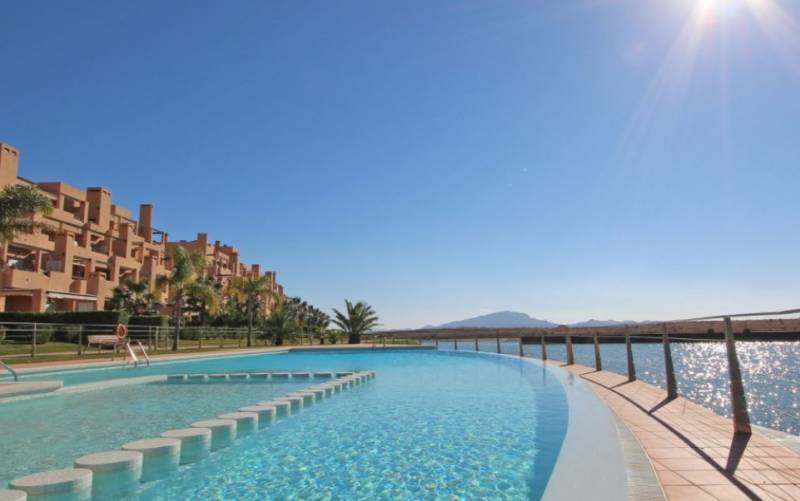
 His plan also involves a proposal to reduce taxes for home buyers and renters, which includes aid for first-time homebuyers and a reduction in the Property Transfer Tax to 4% for those under 40.
His plan also involves a proposal to reduce taxes for home buyers and renters, which includes aid for first-time homebuyers and a reduction in the Property Transfer Tax to 4% for those under 40.

 Lastly, there was a dramatic occurrence that took place at one of Murcia’s golfing urbanisations recently. On La Torre Golf Resort, the holiday season was interrupted by an incident straight out of a crime novel when a local resident found himself kidnapped after a nightclub argument in Torrevieja spiralled into a robbery spree that crossed provincial borders.
Lastly, there was a dramatic occurrence that took place at one of Murcia’s golfing urbanisations recently. On La Torre Golf Resort, the holiday season was interrupted by an incident straight out of a crime novel when a local resident found himself kidnapped after a nightclub argument in Torrevieja spiralled into a robbery spree that crossed provincial borders.
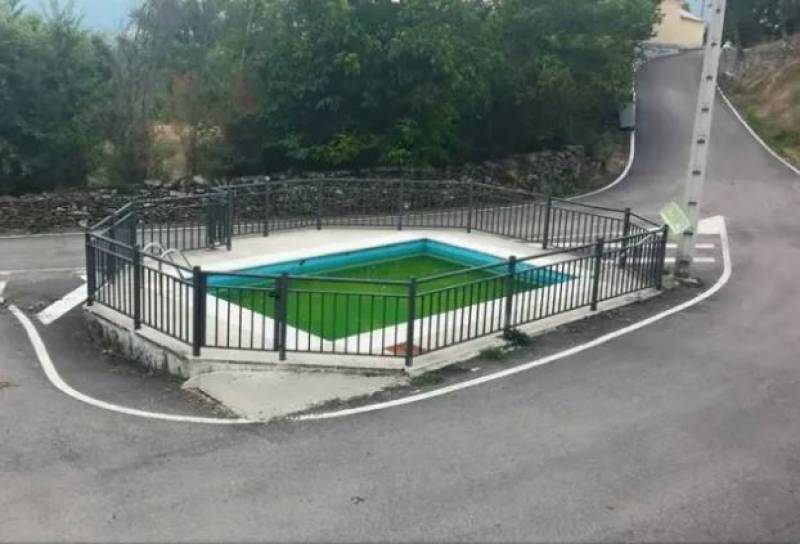
 The council is also planning to improve its recycling facilities and provide educational resources to help residents understand how to use the new system effectively. By making recycling easier and more accessible, they hope to see a significant reduction in the amount of waste sent to landfills.
The council is also planning to improve its recycling facilities and provide educational resources to help residents understand how to use the new system effectively. By making recycling easier and more accessible, they hope to see a significant reduction in the amount of waste sent to landfills.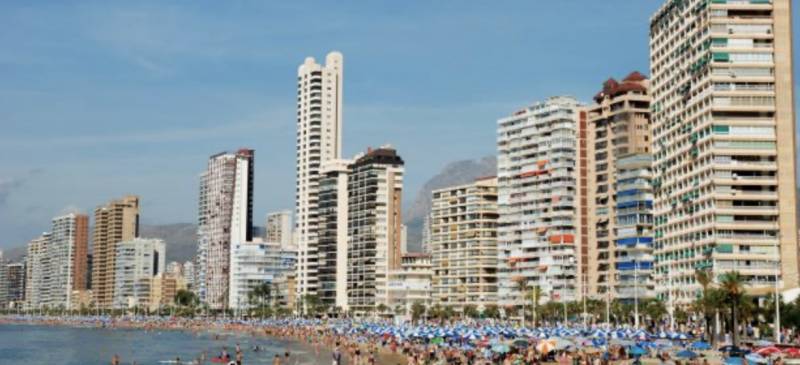
 Emergency services received the distress call late last Friday evening, but by the time rescuers arrived, it was too late to save her. Accompanied by a fellow climber who escaped unharmed but traumatised, her death marks the second fatality in the area in less than two months, following a similar accident involving a 20-year-old British hiker.
Emergency services received the distress call late last Friday evening, but by the time rescuers arrived, it was too late to save her. Accompanied by a fellow climber who escaped unharmed but traumatised, her death marks the second fatality in the area in less than two months, following a similar accident involving a 20-year-old British hiker.